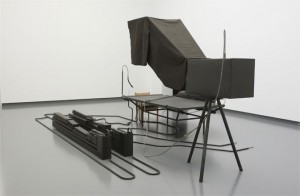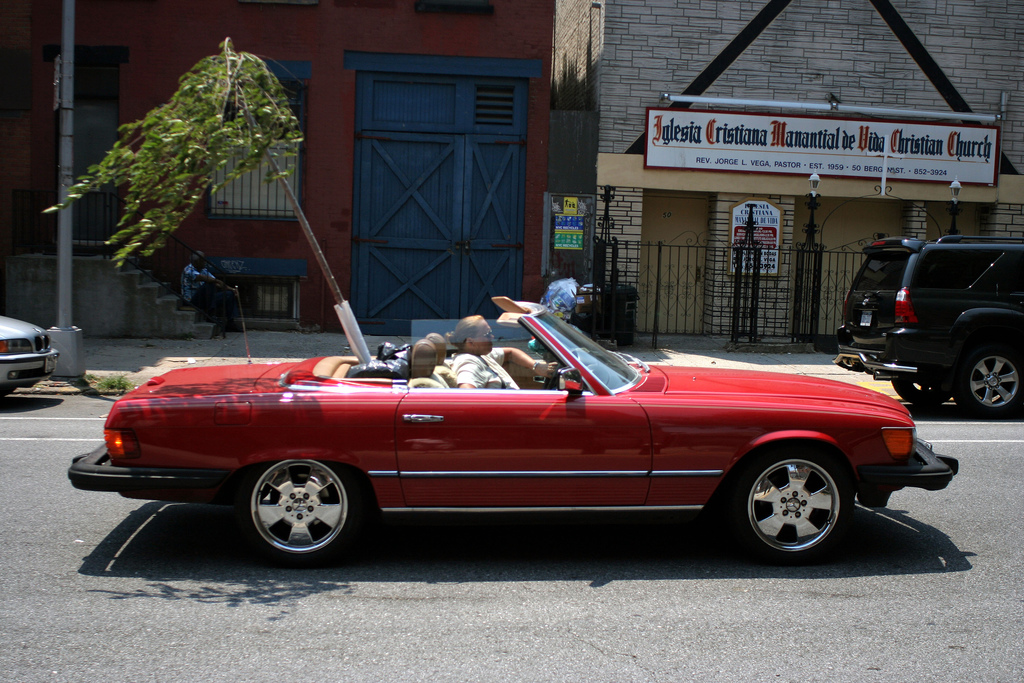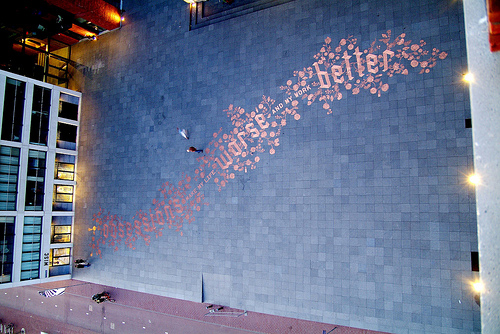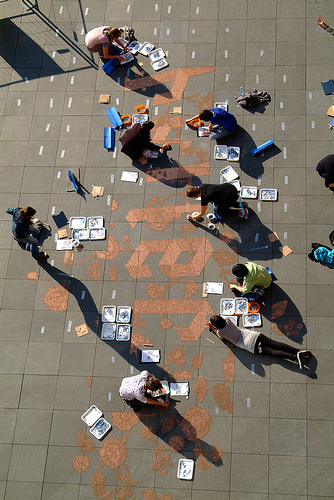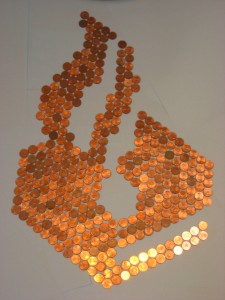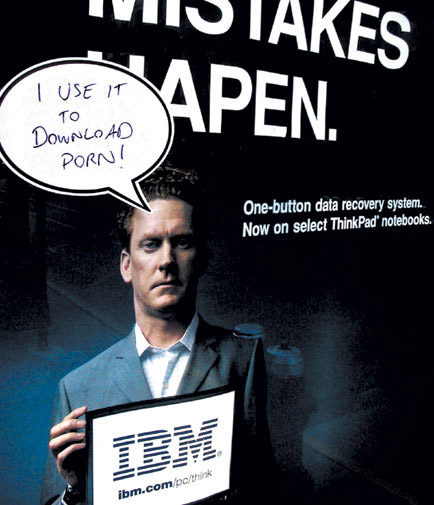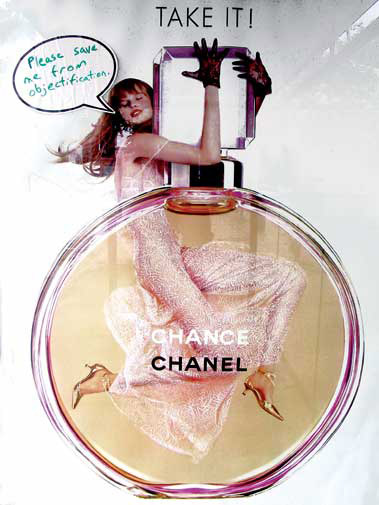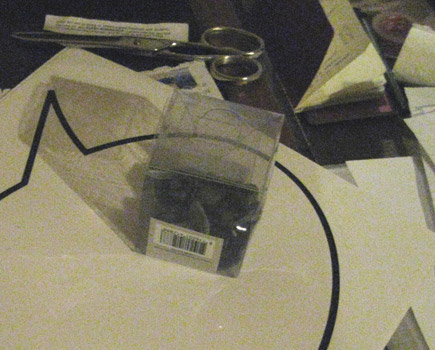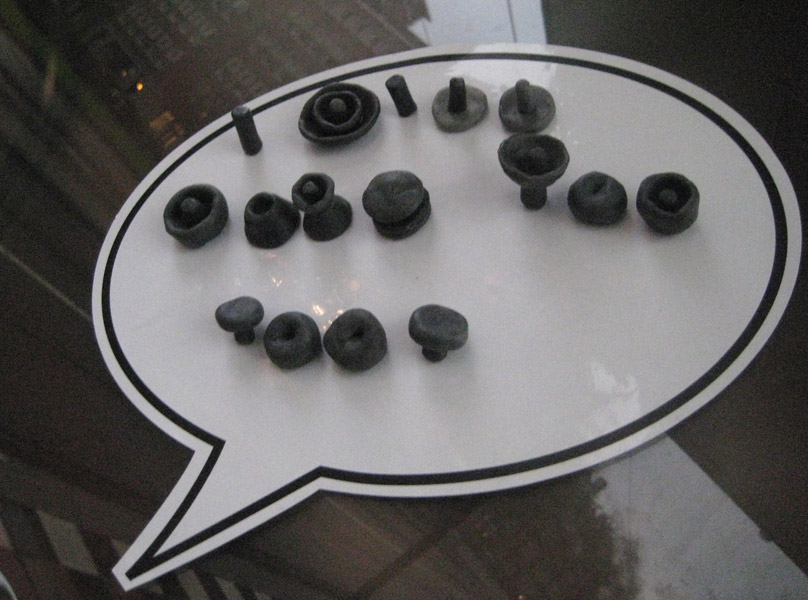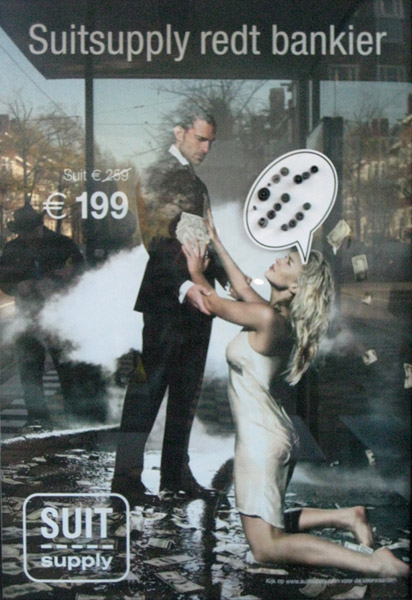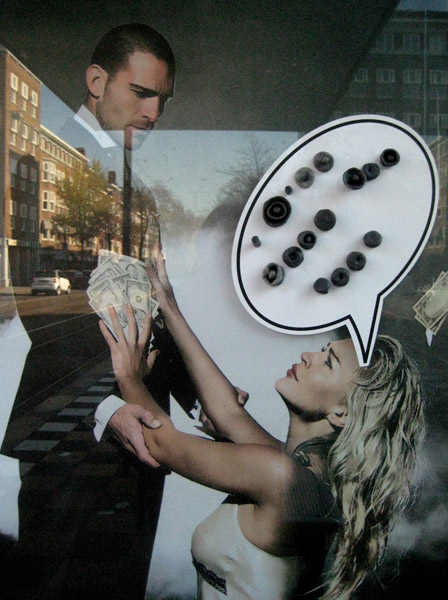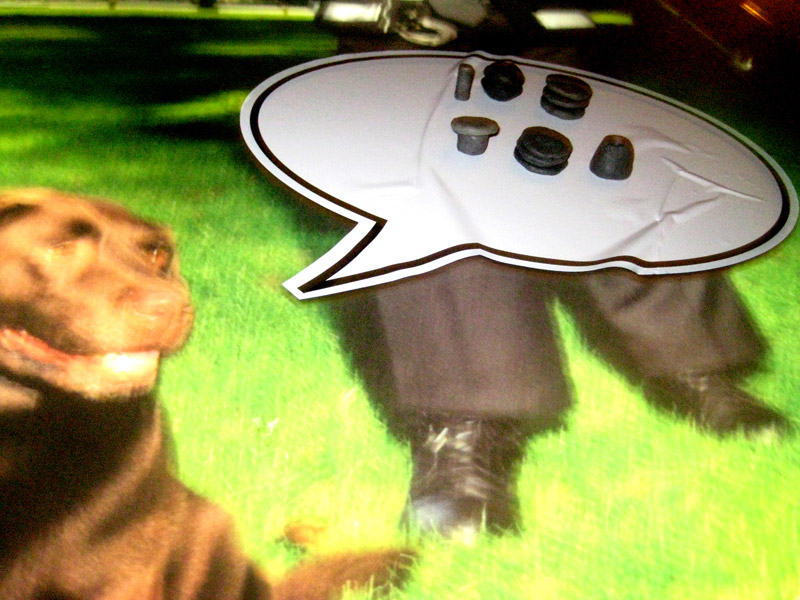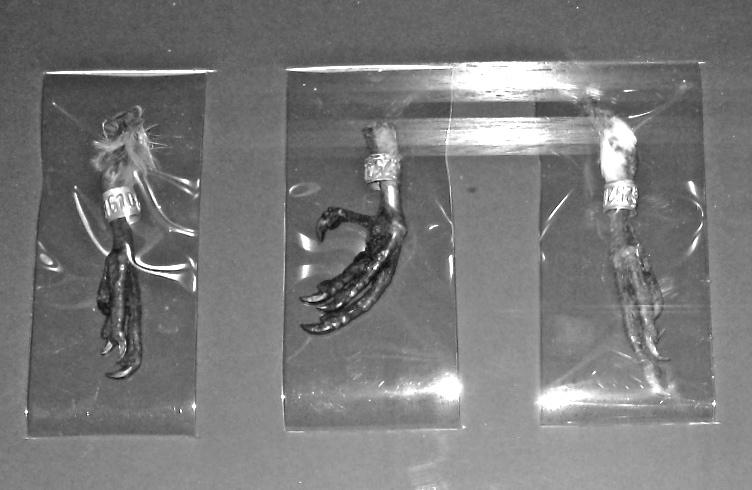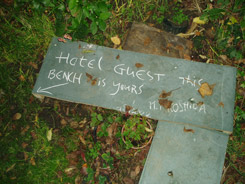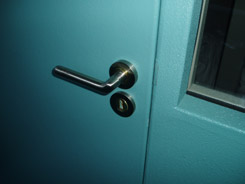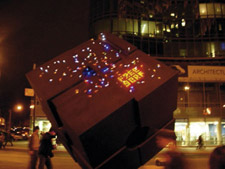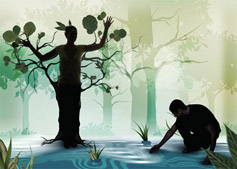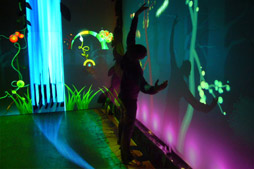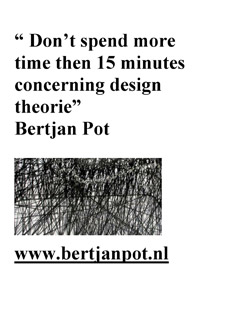I will start with a beautifull sentence that has inspired me often. ”standing still for a moment, is actually a big step forward. So I stand still the whole day”. This sentence is a complete overview of what slowness is for me. But is this in connexion to any kind of design or art? For me in some cases this standing still adds a big layer in looking at things. By looking at objects and art for more than an hour and from the same perspective, it gives a new strength. But is there a way to make other people expierence this power of standing still. What could design/art add to this?
"interaction-design" Category
Opzet geslaagd?
Monday, November 24, 2008
Voor Droog Event 2: Urban Play had architectenbureau NL Architects twee speelplaatsen ontworpen: de BoomBench en Moving Forest.
Moving Forest was een groep kleine bomen in winkelkarretjes. Eind september toen we langs de projecten van Droog Event 2 liepen waren de bomen al tussen stenen balken gezet, om ze bij elkaar te houden.
Het idee was dat voorbijgangers een karretje mee konden nemen en neer konden zetten waar ze maar wilden.
De gemeente Amsterdam vond de karretjes gevaarlijk en was bang dat ze midden op de autoweg terecht zouden komen. Helaas. Hierdoor kwam Moving Forest op mij absoluut niet geloofwaardig meer over. Het idee dat mensen hun eigen groene leefomgeving konden bepalen was ermee verdwenen en het enige wat overbleef was een dood gaand groepje bomen in ijzeren karretjes. Door de gemeente en hun ontwerpers op hun plek vastgehouden. Was het niet beter geweest ze nu weg te halen? Of het statement aan te passen?
Gelukkig had NL Architects dit zelf ook door en hebben de architecten hun project laten staan, maar achteraf de bomen verkocht voor vijf Euro per stuk. Zo voldeed het toch aan hun concept: de koper kon zelf de plaats van het groen bepalen!
Toen ik de bomen voor het eerst zag deden ze me vooral denken aan de consumenten-maatschappij en viel het dood gaan van de bomen in de ijzeren karretjes meer op dan het beweegbare van die karretjes.
Als je geïnteresseerd bent in mensen die zelf bepalen waar het groen is kijk dan vooral een keer naar de film Harold and Maude. Het is een detail, maar Maude besluit ergens in de film om een boom uit de grond te halen midden op straat, om hem mee te nemen.
De BoomBench van NL Arhitects was sowieso een geslaagd ontwerp. Hij wordt (haast) niet aangetast door vandalisme door het respect dat de meeste bezoekers er voor hebben. Hij veroorzaakt geen overlast en de enige klacht die binnen is gekomen is geloof ik dat hij niet harder kan! Hij heeft heel wat mensen geïnspireerd tot het maken van filmpjes. Check Youtube!
posting by Josje Kerkhoven
“Obsessions Make My Life Worse and My Work Better”
Wednesday, November 19, 2008
Stefan Sagmeister is a graphic designer who lives and works in New York.You might know him from his CD cover designs for the Rolling Stones, Lou Reed and many more.
In Experimentadesign he showed us a quote from an old diary of his, saying; ’obsessions make my life worse and my work better’. Spelling out these words he used 250.000 Eurocent coins. He left it completely open for the public to do with the work whatever they wanted; take the coins and start using it as money; take some and create a new image, turn them around, destroy it or just look at it.
It’s ironic to use money as a kind of ink for this line and put it on the street like that. He’s playing with the value of the money. As soon as you realize that the work is made out of money, there is a desire to have it. But then, he’s talking about obsessions. So it feels like a stupid act to take the money and start using it for your own pocket. Beside that, you really need to carry a lot of those heavy 1(!!) Eurocent coins to have a high number. It would be a real torture to take it. You must be really obsessed almost… This reminds me of the work of Damian Hirst (For the Love of God). Wich you can now be seen in the Amsterdam Rijksmuseum. He is playing with the value of art by making the money aspect in art so dominant, marketing. The big difference is though, that Hirst is putting it in a commercial context himself, provoking a discussion and then, he is the one who is leading it. And in Sagmeisters case, it just happened. He didn’t had a hand in it, while Hirst is blowing everything up and it becomes a hype in a way.
The night after the opening of Experimentadesign two people started to put the coins in bags. The police were called and they decided that they had to secure the work so they took it to the police department. How Dutch is that? Due to a lack of interests by the authorities in events like this, you’ll get this kind of results. They’ll fund you to make things possible, and end up taking the artwork after a few hours to protect it. How much room is there left for interventions like these in our super save and over regulated society? Whose space is this anyway?
But still, it’s an unexpected interaction, and that is what the artwork tried to provoke. Therefore, I must say, I love it.
Disobeying for the sake of disobedience
Tuesday, November 18, 2008
Ji Lee (pleaseenjoy.com) is a Korean born New York based designer and initiator of urban interventions. He grew up in Sao Paolo and later moved to New York where he studied at Parsons school of Design. He is now working as creative director for Google, a freelance designer and a design teacher at Parsons school of design. Some of his most well known works are “the Univers Revolved”(universrevolved.com), “Abstractor”(abstractor.tv) and “the Bubble Project”. (thebubbleproject.com)
Ji lee´s contribution to Experimenta design is “the bubble project”(ABC World News). It is a project that he’s been working on since 2002. He initiated it in New York where he printed 50.000 talk-bubble stickers and placed out on top of commercial ads allover New York City, leaving it open for people of the city to fill in their own words. The project has continued to grow ever since.
The idea of the bubbles originally comes from the Situationists (Situationist International), a small assembly of artists and politicians active in the early 60´s. Their main intention was to create disobeying people. In 1968 they made bubbles and stacked them on commercials. They didn’t like the way big companies took advantage of creative people to sell their products so they turned it around and used these commercial images to support their own messages.
Ji Lee is questioning the way our cities are overrun with commercials and our limited possibility to express ourselves in the urban space. Many of the graffiti tags we see on the streets are also a reaction on this but most of the tags we see in the cities are also commercials for artists and crews and the conversations going on in the graffiti world are most of the time only readable for the initiated. By using the Situationists means and turning the commercials into public conversations he encourages all people to communicate their own thoughts without writing anything himself. He is basically giving the word to the people of the city.
posting by Chandra Sen
I Have Something To Hide
Tuesday, November 18, 2008
Nowadays it seems we don’t have anything to hide anymore; we all happily share our personal info on Facebook, MySpace and Hyves. You hardly realize that the government is watching your every ‘digital’ move; internet and email, through bank cards, through your cellphone, even your bonus card at the Albert Heijn supermarket is being traced.
With that in mind, 12 students from the design department of the Sandberg Institute came up with the idea of using an ancient way of communicating; via Pigeon Post. For several months the students trained their very own group of pigeons in order for them to exchange messages about their privacy project. Sara Kolster, one of the students, says that the group has had the idea of doing something with the privacy issue for some time. But when the VPRO (a dutch broadcasting organization) and Holland Doc approached them to participate in their Privacy Project, they really started brainstorming. ‘Almost everything can be traced, even letters. In the 1st and 2nd World War, pigeon post was actually used quite a lot; it is untraceable and pigeons are everywhere’. The project continued during ExperimentaDesign Amsterdam 2008 on the roof of the Post-CS building, where the pigeon house was used at night as a projection screen for showing films and documentaries on privacy issues.
Because of the fact that I didn’t get to see the event on the Post-CS Building, I decided to experience the idea of ‘Hiding from the government’ for myself. One week; my phone, internet, cards and bank cards in exchange for mail, as in letters. On a Sunday, at twelve AM I switched off my phone; peace and quiet. Monday I wrote three letters, if I want to meet friends I’d have to do that a few days in advance. I found out hand writing a letter takes a lot of time, as well as looking for my brother whom I was going to meet, but where and when exactly was that?
Tuesday I received my first answer by mail and Wednesday only got more exciting when I found three letters in my mailbox! But time is suddenly crucial if you want to get your answer out on time, since the postbox deadline is six o’clock. Thursday three letters again, including one of my grandfather, who had post pigeons back in 1936; ‘They used to shit all over the next-door-neighbor’s laundry and another man who had post pigeons too, used to throw rocks at my beautiful birds. People who have post pigeons are maniacs!’
Friday; a friend from another city just stopped by my house to drop off her letter she meant to send. We couldn’t hang out because I was just leaving to go to her city, where I got lost and accidently ended up at her address, where I’d never been but knew from the letter I sent her. What are the odds. Saturday, the last day of my experiment; I had already been tempted at the library and my working place to check my e-mail, but I pulled through and had been invisible for one week!
The Sandberg students definitely made their statement, even though the event was more of a metaphor, It makes you think and even want to experience the experiment for yourself. But after all, it is an event and not a way to live. It is understandable that in busy times we don’t mind sacrificing a little privacy in order to speed things up. That’s why afterwards the students of the Sandberg Institute don’t really feel the urge to keep using this dated method of communicating as long as their personal data whilst using technology is not being abused.
The students are still busy editing a documentary which will be shown on the Holland Doc website and in the meantime the retired pigeons are returned to the Dutch Pigeon Post Organization.
posting by Jesse Muller
Attitude, Approach and Application.
Monday, November 17, 2008
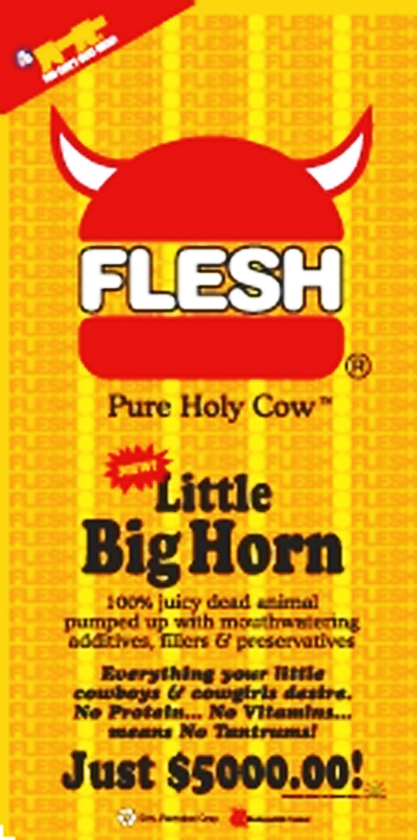
 Ian Anderson, who’s the founder of the Designers Republic, was invited to come and talk for the Amsterdam Conferences at Experimenta Design, Amsterdam.
Ian Anderson, who’s the founder of the Designers Republic, was invited to come and talk for the Amsterdam Conferences at Experimenta Design, Amsterdam.
TDR is known for its anti-establishment aesthetics, while Ian Anderson’s still embracing the consumerism.
As you problably know, TDR does a lot of commercial work for huge brands such as Coca-Cola, Activision Inc and Warp Recordings. But through Ian Andersons art exhibitions, he’s “commenting” on the consumerism and the fact that the whole world is centered around a buy/consume mentality, which of course can be understood as a provocative comment against the consumerism. As he explains: “It’s more an observation and a desire to inspire people to think for themselves rather than a provocation.”
His interest in the consumerism issue, is not about getting people to think that they need things they never knew they wanted. It’s about the control. Like in one of his exhibitions called “Customized Terror”, there was a poster with the word “flesh”. This was not saying that you shouldn’t eat meat. The purpose of the message was to get people to be aware of the ramifications of their actions.
So he’s in some way stepping out of the whole discussion of right or wrong, and has placed himself as some kind of neutral player in the whole discussion concerning the consumerism issue. But of course there will always be different opinions and different ways of looking at his role he has put himself in. Although I think his role in this issue will always be understood, as some kind of contradiction to itself. The Designers Republic
posting by Daniel Norregaard
Hotel experimenta: maak het je eigen
Monday, November 17, 2008
Volgens de Oude Grieken kan de mens alleen in een polis, een stad, een volwaardig leven leiden en zijn streven naar het goede leven verwezenlijken. En nu, eeuwen later, zijn we op het punt gekomen waarbij meer dan de helft van de wereldbevolking in de stad woont. Zijn al deze (nieuwe) stadsbewoners nu beter af? In een context van een veelheid aan keuzemogelijkheden die het aanbiedt en de constante risico’s die op de loer liggen proberen de inwoners zich de stad eigen te maken. Het is hun natuurlijke omgeving geworden, een landschap dat we zelf gecreëerd hebben en continu aan het vormgeven zijn. Dat is het onderwerp van Experimentadesign 2008.
Het is zondagmiddag en ik kom met het pontje aan in Amsterdam Noord. Ik ben op zoek naar Hotel Experimenta van Jan Konings. Voor een huis met een grote tuin met een hoog hek eromheen wappert een experimentadesign vlag. Als je goed kijkt zie je een klein lichtblauw gebouw in de tuin staan. Door de tuin loop ik naar het hotel. Ik voel me er ongemakkelijk bij, dit is iemands private ruimte. Het hotel is leeg. Ik kijk door de ramen, om te ontdekken dat er niet veel meer staat dan een bed. En dat heeft een reden. De hotelgasten moeten de faciliteiten die een ‘normaal’ hotel aanbiedt, zelf zoeken in de omgeving. Bij het café-restaurant om de hoek, de wasserette een paar straten verderop, en niet te vergeten, bij de inwoners van dit stukje stad.
In een interview met Jan Konings vertelde hij me dat hij al langer bezig is met hotels. Aanleiding is de Nederlandse wetgeving, het is verboden om in de openbare ruimte te slapen. Als kunstenaar kan hij mensen de mogelijkheid geven om op bijzondere openbare plaatsen te overnachten. Een van de projecten is Hotel Experimenta. Om een goed leven te leiden in de stad maakt de stedeling keuzes. In een stad leven betekent in delen van de stad leven. Ieder creëert zijn eigen stad. Net als de stedelingen die zich de stad eigen maken, creëren de gasten een eigen omgeving voor zichzelf rondom het hotel.
Ik woon in Amsterdam, maar in dit stuk kom ik nooit. Als ik naar de pont loop, terug naar ‘mijn’ stad, passeer ik de boombench van NLarchitects, het is ook onderdeel van experimentadesign. Een groep jongens met scooters speelt muziek af op de muziekinstallatie in de bank. Een heel ander gezicht dan het verborgen, nu verlaten hotel. De boombench is heel direct, makkelijk te begrijpen en toegankelijk. Hotel Experimenta is veel minder toegankelijk, het vraagt iets terug. Het vraagt om na te denken over de verschillende lagen van het werk. Het hotel staat er, maar het is aan de bezoeker om het in te vullen, ‘er iets van de maken’. Dit geeft de bezoeker vele mogelijkheden. De stedelingen, de hotelgasten en de bezoekers hebben een ding gemeen: ze worden uitgedaagd om zich de stad, de omgeving of het werk eigen te maken.
Op onderstaande link is een filmpje te zien dat ik tijdens mijn bezoek aan Hotel Experimenta gemaakt heb:
posting by Susan Kooi
Street-art for Nerds
Monday, November 17, 2008
The Graffiti Research Lab, is a New York based art group with a technical twist. The GRL was founded in 2005 at Eyebeam Openlab where Evan Roth and James Powderly were both doing fellowships when they met and teamed up. Both of the founders have strong technological backgrounds so it came as no surprise that they would use those skills in their creations.
The team works on new technological ways for people to express themselves through graffiti. Their best known products include the LED throwies which are little LED lightbulbs with a magnet that can be thrown on to any metallic surface to either decorate or get a message accross and the Laser tag which involved using a prjocetor and a technology they developed with Theodore Watson , where they had made a program that imitated the leaking patterns of real graffiti and were able to paint on big houses with a laser. The Laser tag had no long term effects so it was not hard to get a permit for making it when they first did it in Rotterdam and has since been recreated in various ways and always attracted an active, interested crowd.
Theodore Watson, who programmed the Laser tag I found especially interesting. He is a british artist with a very strong focus on technology and programing and is currently residing in Amsterdam.
Watson has a BA in Fine Arts and Design and Technology from Parsons and has had his work displayed at various high profile museums and art fairs such as the MoMa, Tate Modern, Sundance and so on and so forth.
Most recently Watson has been working with children, he designed with visual and motion graphics designer Emily Gobeille, an interactive forest program for children, called Funky forest. The project was premiered in 2007 at the Cinekid festival in Amsterdam. The installation lives and moves with the visitors, by pressing your body against the forest creates a new tree in your shape with different characteristics, by diverting streams of water flowing on the floor different parts if the forest grow, if a tree doesn’t get water it dies. The health of the trees in the forest controls the inhabiting creatures. The installation shows children how nature works in delicate ecosystems.
My favorite work by Watson is his work for a Michel Gondry exhibition. Watson made interactive installations around Michel’s new film at the time, The science of sleep. He made a cardboard covered, kitchen like room with built in screens and paper covered interactive cameras. In one part of the room you could stand facing a screen and pull strings to control the face of Gael García Bernal, in another you could move a camera and see parts of the room with strange effects. A special room with big windows that displayed scenes from the film as fake reality with moving lights and finally a video-piano. The piano had videos and sounds recorded and displayed them when the piano was played. http://muonics.net/
posting by Sunna Sigurmarsdottir
B group /encounters with the autonomy of design
Monday, March 24, 2008
When two exhibitions present a clear insight in the autonomy of modern designing, DesignResearch has to examen what it is all about and who is involved.
This occasion was presented by the “Joyride Expo” organized by Platform 21 and “At Random: Networks and Crossovers” curated by the Paviljoens Almere.
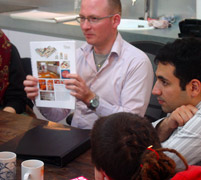

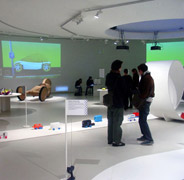
(l>r: at studio Tjep > cuddling the XXL-chair > visiting JoyRide Expo)
The participation of the Dutch product- and interactive design avant garde presented an unique opportunity to experience the freedom in which design concepts can be developped. This became clear at the opening event of the Joyride Expo, when designers transformed remote control toycars into their ultimate joyride dream
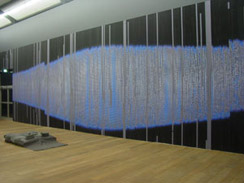
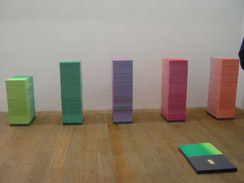
(l>r: Skycatcher by Maurer & Puckey > Expo & Reader designed by Lust)
When visiting Almere (only a 20 minute train-ride), Luna Maurer presented insights into the philosophy behind here work “Graybloc“. One of her other works “Floor design” –an ongoing and ongrowing work in progress– covers the floors with mappings of the organisations consultative structure, as such visualizing the Paviljoen’s network. We could be present to witness her weekly upgrade.
Studio >Tjep< was visited in a later stage as part of a students investigations. We enjoyed an informal presentation of some projectbooks, focussing on his proposal for the restyling of the IKEA restaurant.
Research material was edited down to A4 sized guided tours into selected subjects. All subjects presented in this list are also available as hard copy research prints at the ResearchFolders at the Rietveld library.
Related to Joyride the investigation focussed on the following subjects and people: Bertjan Pot (furniture design), Strange Attractors (interactive design), Marijn van der Poll (product design), Moniek van Heist (fashion design), Dinie Besems, Pieke Bergmans (product design), Frank Tjepkema /Tjep (interior/product design) the general subjects of >Concept Cars<, >Soapbox Racing<, “Craddle to Craddle” McDounough/Braungart (industrial design) the Nature Design exhibit in Zürich and its publication by Lars Müller, Droog Design, Bruce Mau’s “massive change” (communication design) and as added subjects Sophie Krier (Design Lab) and the artist Panamarenko.
related to the ongoing At Random: Networks and Crossovers exhibit, the investigation focussed on: Jeanne van Heeswijk (artist), Lust (graphic design), Nathalie Bruys (geluidskunstenaar), Luna Maurer (interaction design), the At Random reader by Lust design, and the related subjects SKOR and OPEN magazine #13
